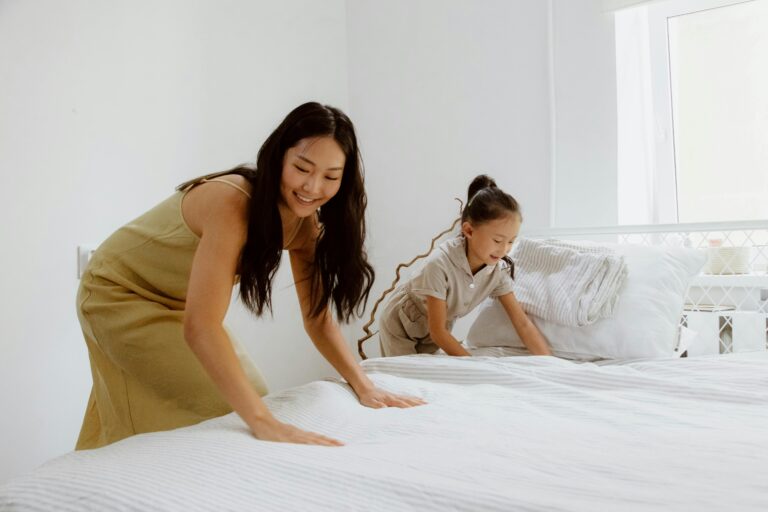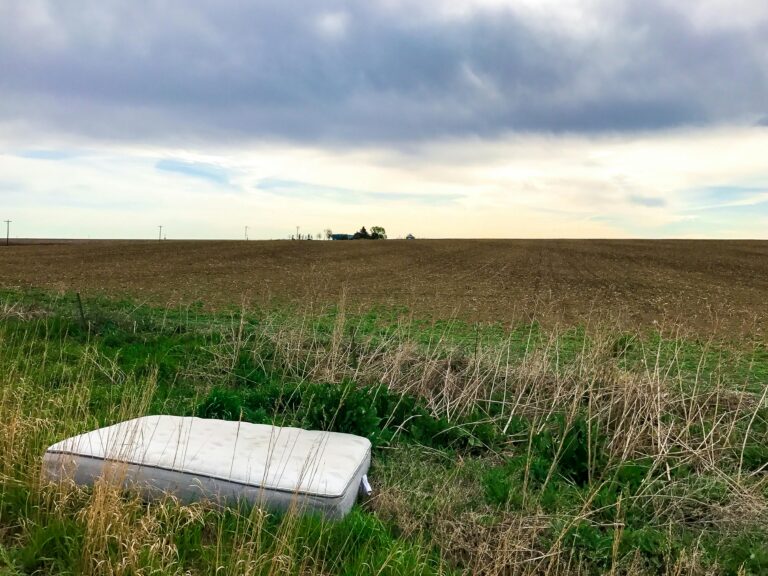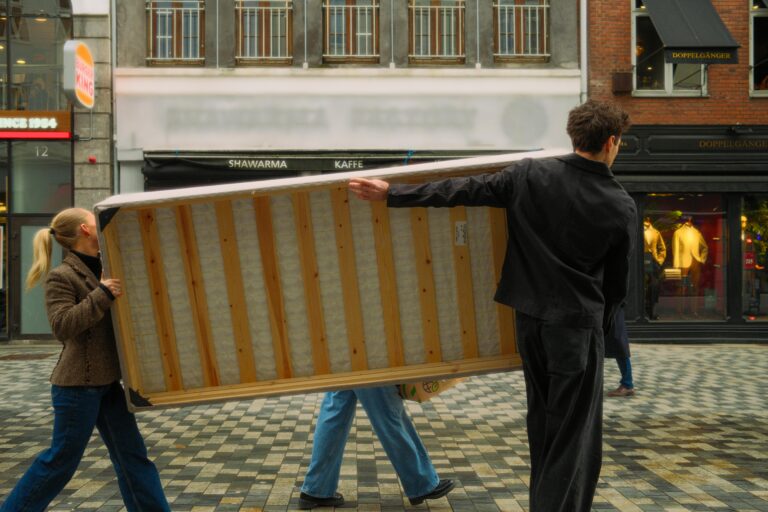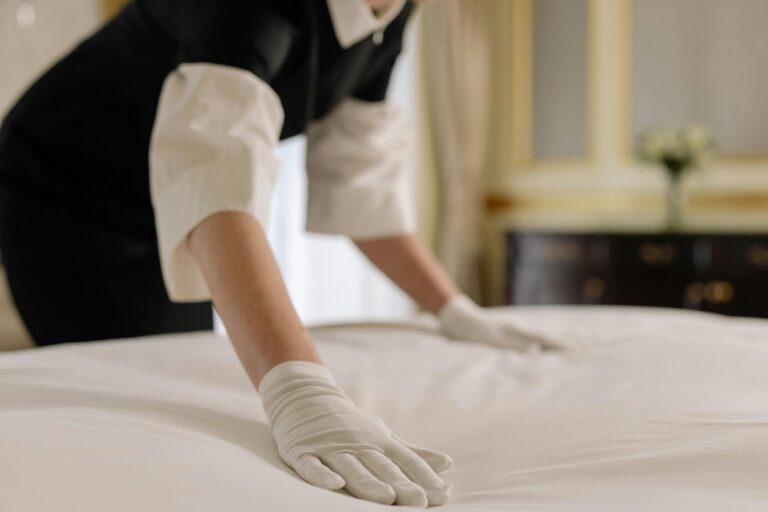How to Keep Mattress from Sliding: A Straightforward and Simple Guide
Waking up at three in the morning. The worst situations are usually when you find out that your mattress has moved halfway across the bed frame and you’re clinging to its edge like a shipwreck survivor. Your bedroom becomes an assault course every night when you sleep on a sliding mattress, which can wear you out by disrupting your sleep and putting strain on your back. Additionally, it has published studies from the Sleep Foundation that shows how inadequate sleep may have long-term cascading impacts, such as elevated stress levels and impaired cognitive function. The good news is that neither Home Depot visits nor reengineering degrees are required. All it takes is a few astute adjustments and the appropriate equipment. Your bed will turn into a stronghold. Let’s get started now.
The Explicit Causes of Your Mattress’s Slippage (Not Just Associated with Your Sheets)
Before we troubleshoot, let’s determine the problem. Three factors typically cause mattresses to slide:
- Flat Surfaces: The Quiet Criminal
The majority of contemporary bed frames, particularly those made of metal or highly polished wood, compromise functionality for aesthetics; these materials lack the natural traction required to support larger mattresses without becoming uninteresting. For example, a steel platform bed might look sleek, but its smooth surface turns into a frictionless runway for your mattress. Even wooden frames with glossy finishes can contribute to the problem.
Pro Tip: Test your bed frame’s traction by placing a small rubber mat on it—if the mattress stays put, you’ve identified the issue.
- Movement: The Midnight Tango
Tossing, turning, or ahem extracurricular activities can shift even a heavy mattress. According to Sleep.org, the average person changes position 10–30 times per night. Over time, this constant motion nudges your mattress incrementally toward the edge. Add kids jumping on the bed or pets scrambling for space, and you’ve got a recipe for chaos.
- Gravity’s Sneaky Role
Beds placed on sloped floors (looking at you, old apartments) turn into unintentional slip ‘n slides. A tilt as subtle as 5 degrees can cause gradual sliding. Use a carpenter’s level to check your floor’s angle—if the bubble isn’t centered, gravity’s working against you.
Mattress Type Matters:
- Memory Foam & Hybrids: These materials adjust to bed frame contours which generate inherent friction forces.
- Innerspring Mattresses: Exhibit reduced weight and increased flexibility causing them to shift more frequently. A traditional innerspring mattress demands heightened vigilance from its user.
7 Solutions to Stop the Slide—Ranked by Effectiveness
- The Essential Grip You Never Realized Was Missing: Non-Slip Mattress Pads
An exceptional non-slip pad serves as the hidden champion that ensures mattress stability. Rubber or grippy fabric pads awkwardly position themselves between your mattress and bed frame. Gorilla Grip presents budget-friendly solutions that secure your mattress position while maintaining comfort standards.
Choosing the Right Pad:
- Rubber vs. Fabric: Rubber provides superior grip but can retain heat. Fabric blends (like silicone-coated polyester) offer breathability with moderate traction.
- Reinforced Corners: Look for pads with corner straps or elastic edges—they’ll withstand nightly battles with gravity.
- Installation Hack: Place the pad on the bed frame first, then lower the mattress onto it. Adjust as needed to eliminate wrinkles.
- Upgrade Your Bed Frame: Invest in Stability
Your bed frame’s appearance as a college dorm relic signals the need for an upgrade. The Thuma Bed Frame represents contemporary design by integrating wooden slats equipped with silicone grips which support your mattress. Consider the application of anti-slip tape onto metal frame rails.
Features to Look For:
- Silicone-Coated Slats: These create a tacky surface that grips the mattress.
- Low Profile Design: Frames closer to the ground reduce lateral movement.
- Center Support Legs: Essential for king or queen beds to prevent sagging and sliding.
- Budget-Friendly Alternative: Attach felt furniture pads to the frame’s contact points for extra grip.
- Rubber Cabinet Liners: The $10 Hack
This economical option demands your attention. You can cut Duck Brand rubber shelf liners to your desired size and position them under your mattress. The intricate surface design secures both frame and mattress by generating friction while maintaining a slim profile.
Step-by-Step Guide:
- Measure the bed frame’s surface area.
- Cut the liner to match the dimensions.
- Lay it flat on the frame, ensuring no overlaps.
- Place the mattress on top and test for movement.
Why It Works: Rubber’s natural tackiness resists movement better than fabric or plastic.
- Velcro Strips: For Heavy-Duty Hold
If your mattress weighs a ton (hello, king-size hybrids), industrial-strength Velcro is your friend. Apply adhesive strips to the bed frame and corresponding strips to the mattress bottom. Brands like 3M make strips strong enough to hold 10+ pounds per square inch.
Application Tips:
- Clean the frame and mattress surface with rubbing alcohol before applying.
- Use at least six strips (two on each side and two in the center) for even hold.
- Press firmly for 30 seconds to activate the adhesive.
Caveat: Avoid this if you frequently rotate your mattress—reapplying Velcro gets old fast.
- Double-Sided Carpet Tape: The Nuclear Option
Reserve this for mattresses that refuse to stay put. Double-sided carpet tape creates a semi-permanent bond between the mattress and frame. Scotch Indoor Mounting Tape works well but test a small area first to avoid adhesive residue.
Best For: Lightweight mattresses on metal frames.
Removal Tip: Warm the adhesive before peeling it off using a hair dryer.
- Adjust Your Bed’s Placement: Geometry to the Rescue
Sometimes the fix is as simple as moving your bed. If it’s on hardwood floors, center it away from walls to prevent one-sided sliding. For sloped floors, use furniture shims under the bed legs to level the playing field.
Pro Insight:
- Place the bed perpendicular to the floorboards to minimize movement.
- Use an anti-slide rug pad under the bed legs for added grip.
- Heavy-Duty Bedding: Weight Matters
Swap lightweight cotton sheets for heavier materials like linen or flannel. A thick Brooklinen Weighted Blanket adds downward pressure, while a quilted mattress topper increases friction.
Layering Strategy:
- Start with a non-slip pad.
- Add a wool or latex mattress topper.
- Use linen sheets and a weighted blanket.
Added Bonus: These upgrades regulate temperature and improve sleep quality—win-win.
Comparison Table: Solutions at a Glance
| Solution | Cost | Effectiveness | Ease of Installation | Durability |
| Non-Slip Mattress Pad | 20–20–40 | 9/10 | Easy | 2–5 years |
| Bed Frame Upgrade | $200+ | 10/10 | Moderate | 10+ years |
| Rubber Cabinet Liners | $10 | 7/10 | Easy | 1–3 years |
| Velcro Strips | $15 | 8/10 | Moderate | 6–12 months |
| Double-Sided Tape | $8 | 6/10 | Easy | 3–6 months |
| Adjust Bed Placement | Free | 5/10 | Easy | N/A |
| Heavy Bedding | 50–50–150 | 6/10 | Easy | 3–7 years |
When to Call in the Pros (Yes, Really)
Most mattress slides can be solved with DIY fixes, but there are exceptions:
- Warped Bed Frames: If your frame is visibly uneven, companies like TaskRabbit can help repair or replace it.
- Chronic Sliding Despite Fixes: Your mattress might be the wrong size for the frame. Measure carefully—a “standard” queen bed can vary by up to 2 inches between brands.
- Structural Floor Issues: If shims don’t solve sloping, consult a contractor to assess your home’s foundation.
Preventative Maintenance: Keep Your Mattress in Check
- Rotate Regularly: Flip or rotate your mattress every 3–6 months to distribute wear.
- Check Alignment: Use a level monthly to ensure the bed hasn’t shifted.
- Clean Contact Points: Dust and debris reduce friction—wipe the frame and mattress base quarterly.
FAQ: Your Mattress Stability Questions, Answered
Q: Are these solutions capable of causing harm to my mattress or frame?
A: The majority of procedures do not require invasive techniques. Refrain from using adhesives on delicate textiles and perform tests in hidden spots before application.
Q: What is the recommended frequency for replacing non-slip pads or liners?
A: You should replace them whenever they lose their elastic properties or display visible deterioration which generally occurs within a 1–3 year period.
Q: Is it possible to integrate several solutions into one?
A: Absolutely! Integrate a non-slip pad alongside Velcro strips to achieve unparalleled stability.
The Bottom Line: Sleep Tight, Not Slippery
Stopping mattress movement isn’t about brute force—it’s about smart friction. Start with non-slip pads or rubber liners, then escalate to Velcro or tape if needed. And if all else fails? Treat yourself to a new bed frame. Your future self (and your back) will thank you.
Your Turn: Tried a hack that worked like magic? Or one that failed spectacularly? Share your mattress adventures in the comments—let’s crowdsource the ultimate grip solution.
Still hunting for the perfect mattress setup? Explore our guide to choosing the right mattress type for your sleep style. And for more bedroom hacks, check out our tips on optimizing small spaces for better sleep.






